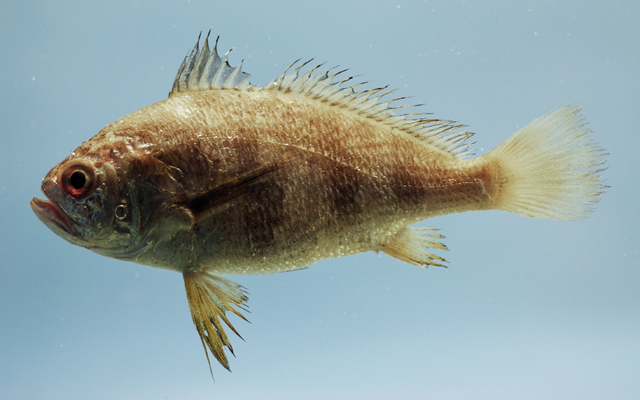| Sciaenidae (Drums or croakers) |
| 25 cm TL (male/unsexed) |
|
demersal; brackish; marine; depth range - 98 m |
| Western Atlantic: Massachusetts to Texas in the USA, except for southern Florida. Including Gulf of Mexico (Ref. 26938). |
|
Dorsal spines (total): 11-11; Dorsal soft rays (total): 24-27; Anal spines: 2-2; Anal soft rays: 6-7. Colour greyish olive above, silvery white below. Back with 7 to 9 rather conspicuous dark vertical bars. Inside of opercle dark. Lower parts of pelvic fins, anal and caudal fins yellowish. A moderately small fish, body short and robust. Mouth large, strongly oblique, lower jaw projecting. Teeth very small and pointed, set in 1 or 2 rows along edges of jaws. Chin without barbels, but with 4 minute pores. Snout with 5 marginal pores and no rostral pores. Gas bladder simple, carrot-shaped, without anterior appendages. Sagitta (Large earstone) short but very thick (Ref 51721). |
| Occurs usually over mud and sandy mud bottoms in coastal waters to about 60 m depth, more rarely in estuaries. Feeds mainly on small shrimps. |
|
Least Concern (LC); Date assessed: 09 October 2019 Ref. (130435)
|
| harmless |
Source and more info: www.fishbase.org. For personal, classroom, and other internal use only. Not for publication.

